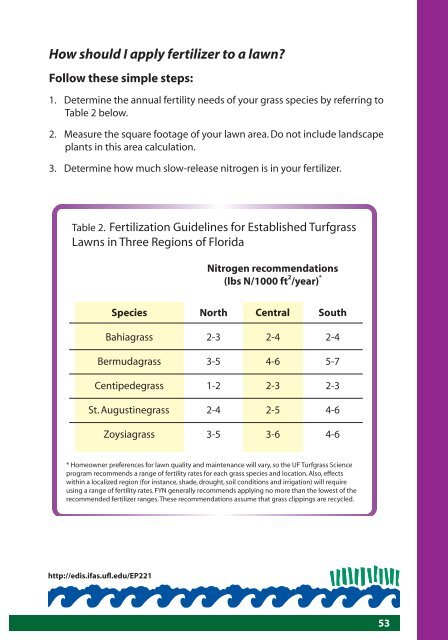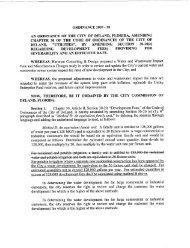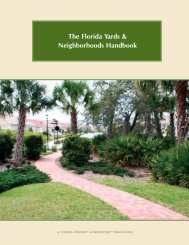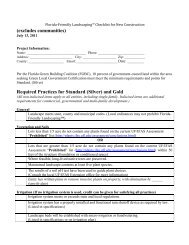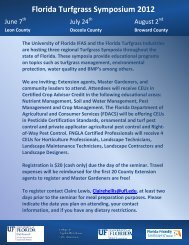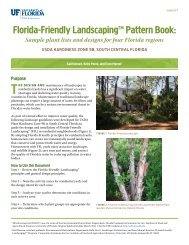A Guide to Florida-Friendly Landscaping A Guide to Florida-Fr ...
A Guide to Florida-Friendly Landscaping A Guide to Florida-Fr ...
A Guide to Florida-Friendly Landscaping A Guide to Florida-Fr ...
You also want an ePaper? Increase the reach of your titles
YUMPU automatically turns print PDFs into web optimized ePapers that Google loves.
How should I apply fertilizer <strong>to</strong> a lawn?<br />
Follow these simple steps:<br />
1. Determine the annual fertility needs of your grass species by referring <strong>to</strong><br />
Table 2 below.<br />
2. Measure the square footage of your lawn area. Do not include landscape<br />
plants in this area calculation.<br />
3. Determine how much slow-release nitrogen is in your fertilizer.<br />
Table 2. Fertilization <strong>Guide</strong>lines for Established Turfgrass<br />
Lawns in Three Regions of <strong>Florida</strong><br />
Nitrogen recommendations<br />
(lbs N/1000 ft 2 /year) *<br />
Species<br />
North Central South<br />
Bahiagrass 2-3 2-4 2-4<br />
Bermudagrass 3-5 4-6 5-7<br />
Centipedegrass 1-2 2-3 2-3<br />
St. Augustinegrass 2-4 2-5 4-6<br />
Zoysiagrass 3-5 3-6 4-6<br />
* Homeowner preferences for lawn quality and maintenance will vary, so the UF Turfgrass Science<br />
program recommends a range of fertility rates for each grass species and location. Also, effects<br />
within a localized region (for instance, shade, drought, soil conditions and irrigation) will require<br />
using a range of fertility rates. FYN generally recommends applying no more than the lowest of the<br />
recommended fertilizer ranges. These recommendations assume that grass clippings are recycled.<br />
http://edis.ifas.ufl.edu/EP221<br />
53


